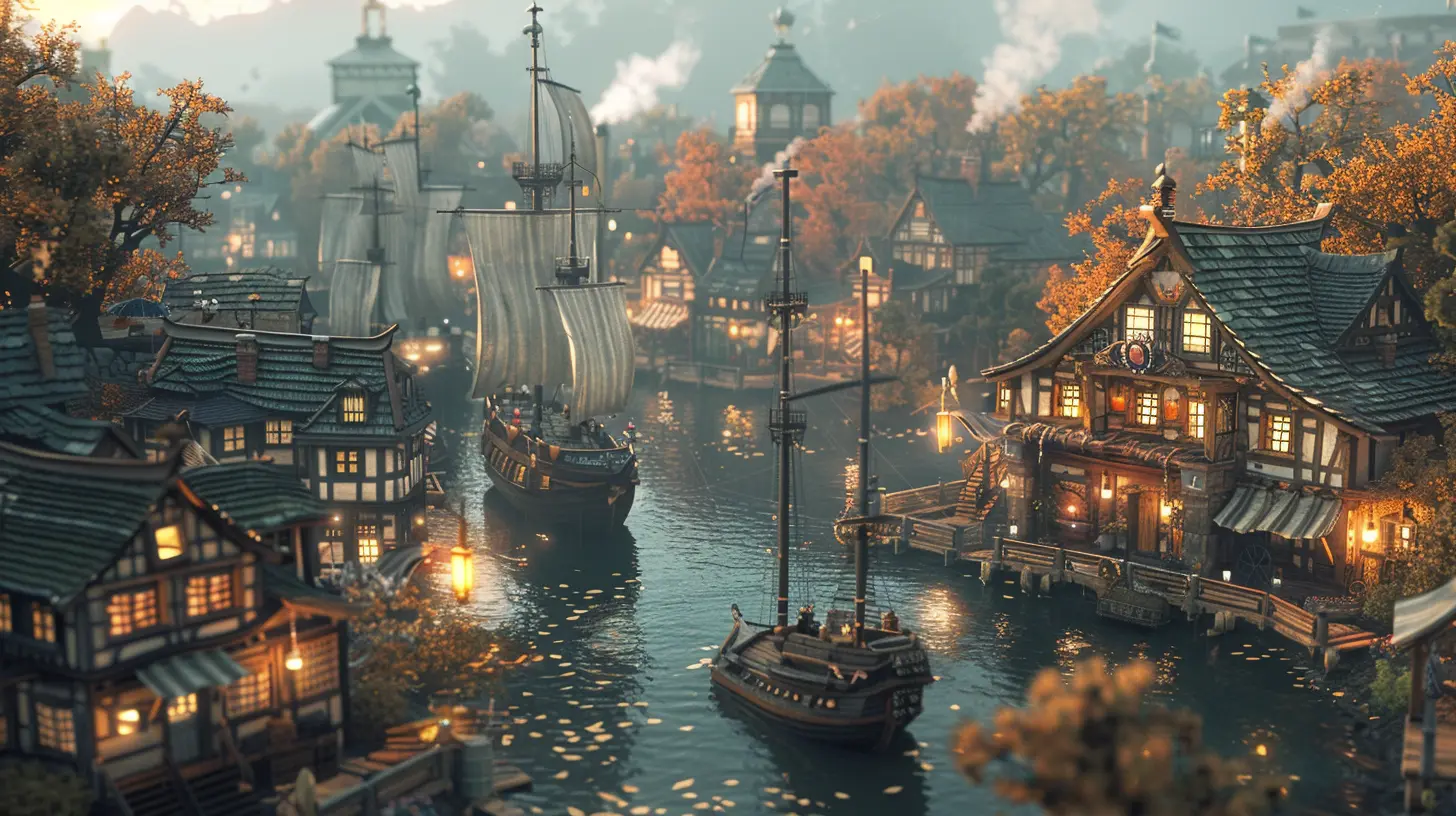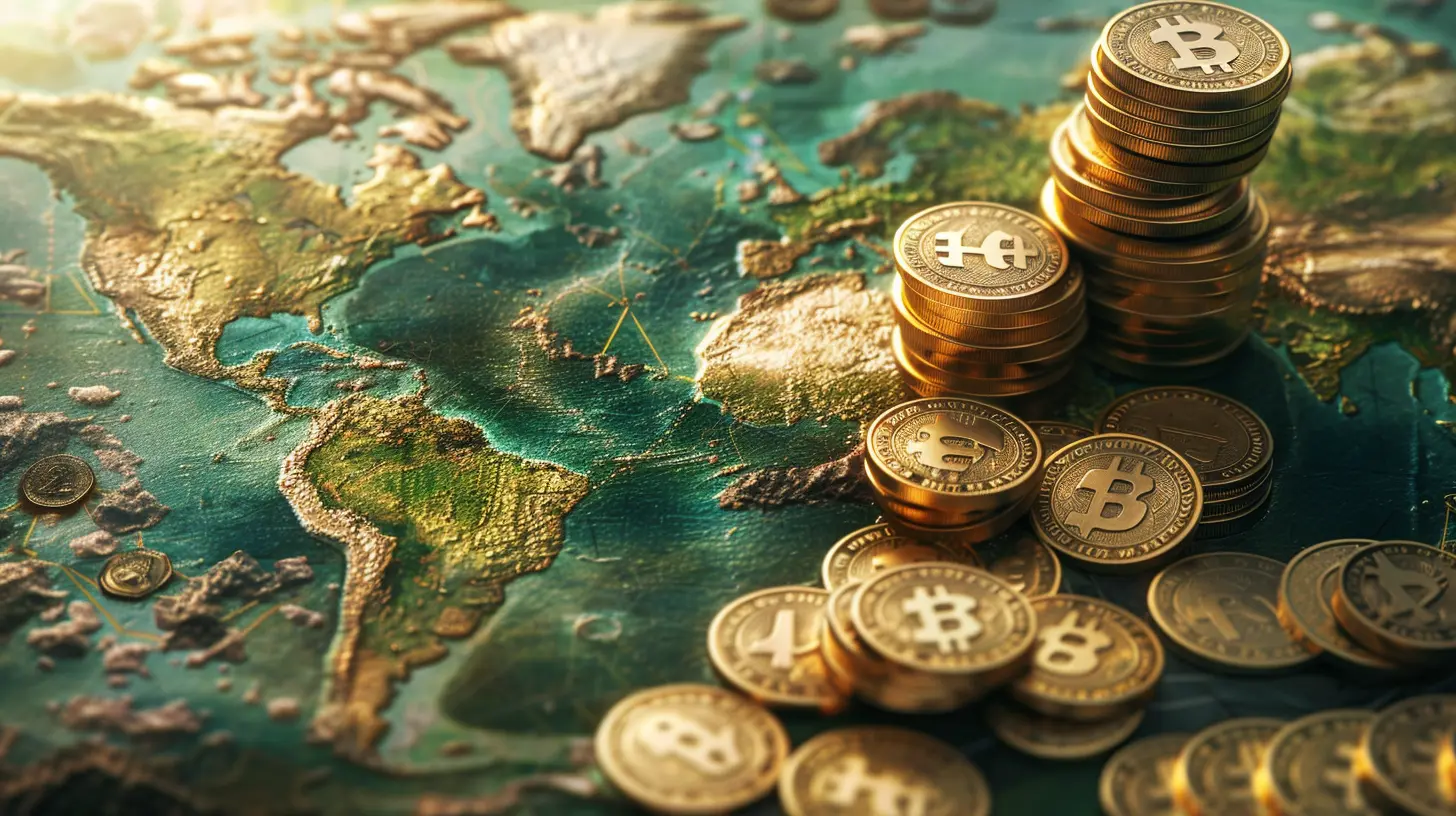23 April 2025
When it comes to creating an immersive game world, few things are as essential as a well-thought-out economy. A believable economy can breathe life into your game, making players feel like they’re part of a living, evolving world. But hey, let’s face it—economies are tricky! If you've ever played an RPG where the local shopkeeper mysteriously had 100,000 gold to buy your random loot, you’ve probably rolled your eyes at just how "off" it felt. The truth is, designing an in-game economy is like walking a tightrope. Too simple, and it feels flat and fake. Too complex, and your players might feel like they accidentally opened an econ textbook.
So, how do you make an in-game economy feel real without overcomplicating the fun? Well, let’s break it down! Today, we’ll tackle the key components: currency, trade systems, and resource management. 
What Makes a Game Economy Feel "Real"?
Before diving into each piece, let’s ask ourselves this: what makes economies believable in the real world? Scarcity, supply and demand, and how resources flow between people, right? These same principles apply in games. If an economy doesn’t make sense, players notice pretty quickly. You can’t just slap a currency system on top of your game and call it a day. It has to integrate seamlessly with the rest of the world.Think about games like The Witcher 3 or EVE Online. These games don’t just use currency as a placeholder—they leverage it to make their worlds feel authentic. Geralt can’t just walk into a town and expect everyone to buy his monster parts for a king's ransom. Likewise, EVE Online has an entirely player-driven economy that mirrors the complexities of real-world trade. These systems aren’t just "extras;" they’re part of what makes these games so memorable. 
Currency: The Backbone of Any Economy
Let’s start with currency. Almost every game has some form of money, whether it’s gold coins, credits, or even seashells (hey, you do you). But how that currency is earned, spent, and valued can make or break the experience for players.1. Earning Currency Should Be Rewarding
Nobody likes grinding for hours just to afford a decent sword. If earning currency feels like a chore, players will check out faster than you can say "economy overhaul." The key here is balance. Currency should feel valuable but accessible. For example, in Stardew Valley, earning gold is tied to farming, mining, fishing, and other activities that feel rewarding. You’re not just grinding for the sake of it; you’re building something.2. Spending Currency Should Matter
We’ve all played games where the currency seemed pointless. Like, why bother saving gold if everything useful is either too expensive or easily lootable? The trick is to make spending money feel meaningful but not punishing. In Dark Souls, for example, spending your souls (the game’s currency) is a high-stakes decision. Do you level up, buy new gear, or risk losing it all by dying? That tension makes every purchase feel significant.3. Avoid Inflation
Ever played a game where you end up with piles of cash and nothing to buy? Yawn. That’s the result of poor currency balancing. To keep things interesting, you need to control how much currency enters the economy. Games like World of Warcraft combat inflation with gold sinks—things like repair costs or mounts that drain excess money from the system.
Trade Systems: Bringing the World to Life
Now, let’s talk trade. Trading systems are where things can really shine—or fall apart. A good trade system makes players feel like they’re part of a larger world. A bad one? It feels like a poorly disguised menu.1. NPC Trade Systems Should Make Sense
If an NPC is selling you bread at 50 gold but buying your rare gemstones for 5 gold, something’s off. NPC trade systems need logic. Shopkeepers should care about what’s valuable to them. Maybe in a poor farming village, tools and seeds are highly prized, while rare jewels are practically worthless.A great example here is Red Dead Redemption 2. The game’s trading system feels grounded in its setting. A general store in the Wild West isn’t going to have fancy imported goods, but you might find a good deal on ammo or a solid horse.
2. Player-to-Player Trade: A Double-Edged Sword
Player-driven trade can be amazing—if it’s done right. Games like EVE Online show how a player-run economy can add depth and unpredictability. But it can also go sideways fast. Duplicate items, exploits, and overpowered trades can destroy balance if you’re not careful. The key is oversight. If you’re letting players run the market, make sure you have systems in place to prevent abuse.3. Bartering vs. Currency
Not every economy needs a formal currency system. Bartering can be a refreshing change if it fits your game’s world. For example, in Fallout: New Vegas, caps are the official currency, but bartering is just as important. Using trade items instead of cash can reinforce your game’s setting and give players more creative ways to approach problem-solving.
Resources: The Heart of Every Economy
Finally, let’s talk about resources. This is where the magic happens. Currency and trade are just tools—resources are what tie it all together. They’re the "stuff" that players work with and fight over.1. Resource Scarcity Drives Gameplay
In the real world, scarcity is what makes resources valuable. The same principle applies to games. If everything is abundant, nothing feels special. A perfect example is Minecraft. Diamonds are rare, and that scarcity makes finding them feel like a huge accomplishment. If diamonds were as common as dirt, they wouldn’t mean anything.2. Resource Variety Adds Depth
Don’t just stick to one type of resource—mix it up! Different resources should serve different purposes. Look at Civilization VI. You’ve got strategic resources like iron and horses for your military, while luxury resources like silk or spices keep your population happy. The variety keeps players engaged, forcing them to prioritize and strategize.3. Resource Locations Should Make Sense
Where you find resources matters just as much as what they are. If you’re mining gold in the middle of a swamp, something isn’t adding up. Tie resource locations to your world’s geography and lore. Games like The Elder Scrolls V: Skyrim excel at this. Silver mines are found in mountainous areas, while certain herbs grow only in specific climates. It makes the world feel cohesive and believable.Challenges of Building a Game Economy
Of course, building a believable economy isn’t all sunshine and rainbows. There are some big challenges to tackle.- Balancing Act: Get ready to playtest. A LOT. Balancing one aspect of your economy (say, how easy it is to earn gold) can throw off everything else.
- Player Behavior: Players will ALWAYS find ways to break your system. Whether it’s farming rare items or exploiting trade loopholes, expect the unexpected.
- Keeping It Fun: At the end of the day, it’s a game. If your economy feels too much like real-life drudgery, players won’t stick around.
Final Thoughts
Creating a believable game economy is no small feat. It’s not just about adding gold coins and calling it a day—it’s about integrating currency, trade, and resources into a system that feels alive. Whether you’re designing a gritty survival sim, a sprawling MMORPG, or a charming farming game, your economy should reflect the world you’re building.And remember, balance is key. If your players feel like their decisions matter—whether it’s selling a rare gem, trading with another player, or deciding which resource to harvest—you’ve already won half the battle.
Now, what kind of economy will you build in your next game?




Aris Martinez
Realism in economies enhances player immersion.
April 24, 2025 at 4:02 PM